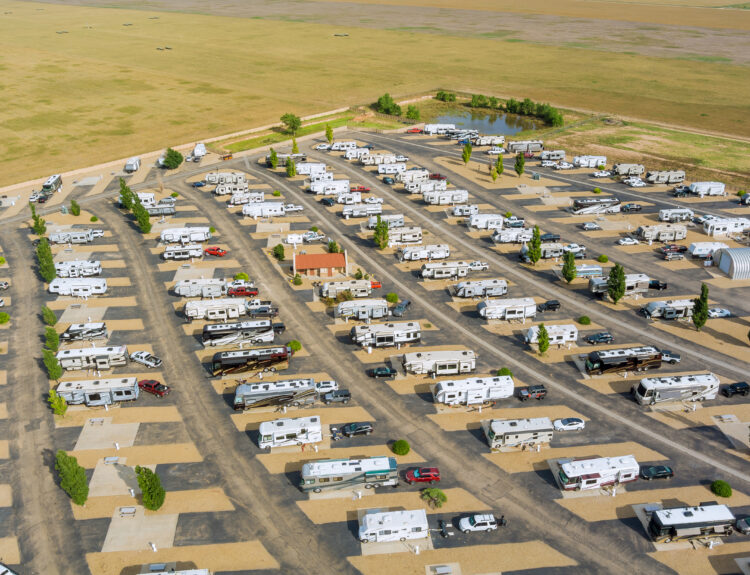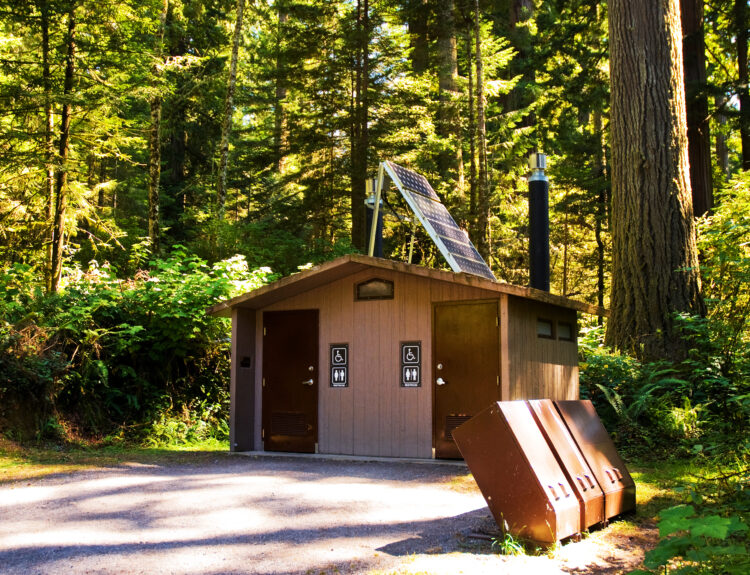The allure of the open road and the promise of varied landscapes have fueled a burgeoning industry of RV parks. Whether you are planning to buy, sell, finance, or start an RV park business, you need to have a reliable estimate of its value. But how to estimate the value of an RV park? What factors influence its value? What methods can you use to estimate it?
Valuation not only serves as a benchmark for buying or selling but also provides a roadmap for strategic growth and investment. In this article, we will show you how to estimate the value of an RV park using different methods and sources of information. However, for more specialized assistance in estimating the value of an RV experts like Parikh Financial will be a solution, with its data analysis and financial management solutions.
Factors that Affect Campground Valuation
As with any real estate or business venture, the value of an RV park isn’t solely determined by its physical attributes or bottom-line numbers. Instead, it’s a culmination of various intertwined factors, both tangible and intangible. For potential investors and current owners alike, understanding these elements is crucial for accurate valuation.
Let’s explore the various aspects that play a pivotal role in determining an RV park’s true worth.
Location
The closer the RV park is to major highways, tourist attractions, natural amenities, or urban areas, the higher its value. Additionally, the park’s location within regions with favorable economic conditions, such as high employment rates or booming tourism sectors, can further enhance its worth.
Size and Capacity
The physical expanse of the RV park in terms of acreage, combined with the number of available sites, shapes its valuation.
A larger park with room for expansion suggests future potential, making it an enticing prospect for investors. Conversely, a smaller, fully-utilized park might offer less growth potential, but its consistent occupancy can be a testament to its profitability and attractiveness.
Bottom Line
An RV Park’s bottom line plays a significant role in its valuation.
RV parks with high occupancy rates tend to have a higher value. The higher the income the RV park generates from its operations (such as rents, fees, commissions, concessions, etc.) and the lower the expenses (in utilities, maintenance, repairs, taxes, insurance, payroll, marketing, etc.), the higher its value.
Amenities and Facilities
The modern RV traveler often seeks comforts akin to home while on the road. The more and better amenities the RV park offers to its guests, such as hookups, restrooms, showers, laundry, Wi-Fi, cable TV, swimming pool, playground, clubhouse, store, etc., the higher its value.
On top of these basics, recreational facilities such as pools, playgrounds, dog runs, and community halls act as cherries on the cake, amplifying appeal and driving up valuation.
Market Conditions
Favorable market conditions for the RV park industry and the economy in general can substantially uplift the value of RV parks.
Regulatory Issues
The more compliant the RV park is with all the laws and regulations that govern its operations, such as zoning ordinances, building codes, environmental standards, health and safety rules, etc., the higher its value.
Reputation and Reviews
In this digital age, online reputations can make or break businesses. A park known for its impeccable service, cleanliness, and guest experience will invariably command a higher price. Similarly, a loyal clientele base, evidenced by repeat bookings and referrals, can significantly impact an RV park’s valuation, cementing its standing as a preferred destination.
To estimate the value of an RV park, you need to collect and analyze data on these factors from various sources, such as online databases, brokers, appraisers, industry publications, or personal observation. These factors and sources can be used to adjust or compare the value of different RV parks.
Valuation Methods

There are three main valuation methods that are commonly used for estimating the value of an RV park: the income approach, the sales comparison approach, and the cost approach.
Each method has its own advantages and disadvantages and may yield different results depending on various assumptions and factors. Therefore, it is recommended that you use multiple methods and sources to cross-check and validate your estimates.
The Income Approach
The income approach is the most commonly used and reliable method for estimating the value of an RV park. In essence, it focuses on the potential income a property can generate, offering a snapshot of the return on investment one might expect.
This method uses the net operating income (NOI) of the RV park and a capitalization rate (CAP rate) to estimate its value. The NOI is the gross income minus the operating expenses, excluding depreciation, interest, and taxes. The CAP rate is the ratio of NOI to value, which reflects the return on investment for the RV park.
You can obtain or estimate the NOI by using data from your own records or from comparable properties. To obtain or estimate the CAP rate, you can use data from recent sales of similar properties in your market area or by using industry averages or benchmarks. Once you have the NOI and CAP rate, you can multiply them to get the value of the RV park.
For example, if an RV park has an annual net operating income of $100,000 and the prevailing cap rate is 10%, the park would be valued at $1,000,000.
The advantage of using this method is that it is based on the actual performance and profitability of the RV park, which is more relevant and realistic than other factors.
However, it’s vital to approach this method with a discerning eye. Its accuracy hinges on two main variables: a precise estimate of the net income and an appropriate cap rate. Market shifts, seasonal changes in income, or unexpected maintenance costs can sway the net income, while choosing an unsuitable cap rate can skew the final valuation.
The Sales Comparison Approach
The sales comparison approach compares the RV park to similar properties that have been sold recently in the same market area. To use this method, you need to find comparable sales data from reliable sources and adjust the sales prices based on differences in size, location, condition, amenities, income, expenses, and other factors.
This method reflects the actual transactions and market conditions. However, it’s crucial to note the limitations: finding truly comparable sales can be challenging, and significant differences between properties or market fluctuations can render comparisons less accurate.
The Cost Approach
The cost approach values an RV park based on the combined cost of its land and any improvements made, adjusted for depreciation. Essentially, it answers the question: “How much would it cost to recreate this RV park from scratch today?”
To use this method, you need to estimate the land value and the improvement value of the RV park. The sum of the land value and improvement value is the estimated value of the RV park.
This method’s main advantage is that it is based on objective and measurable costs. But while this method can be particularly relevant for newer parks where costs of improvements are still representative, it may fall short for older parks where the actual market demand and intangible value factors aren’t directly considered.
Estimating the Value of an RV Park
Estimating the value of an RV park requires a blend of analytical rigor and market insight. While the methods described above offer structured frameworks, it’s the intertwining of tangible assets with intangible factors like reputation that truly shape a park’s worth.
For RV park entrepreneurs, understanding these valuation intricacies is the cornerstone for informed decision-making, whether for strategic growth, investment, or a fruitful sale.
There is more to learn about how to start and grow a successful RV park business. Keep reading our blog for more insights!






